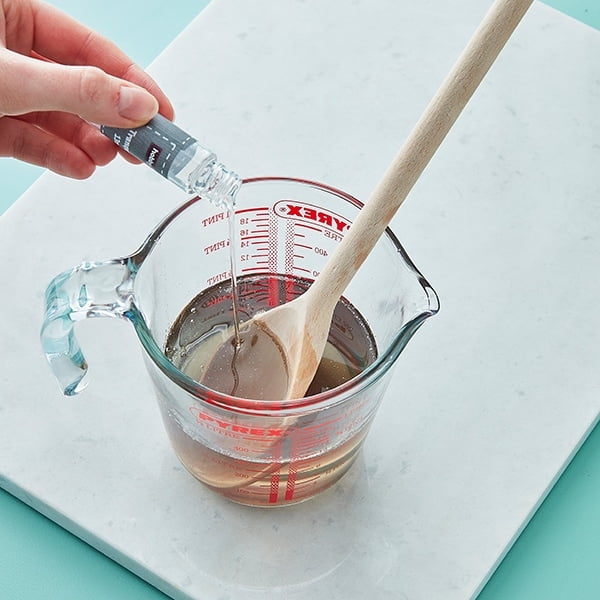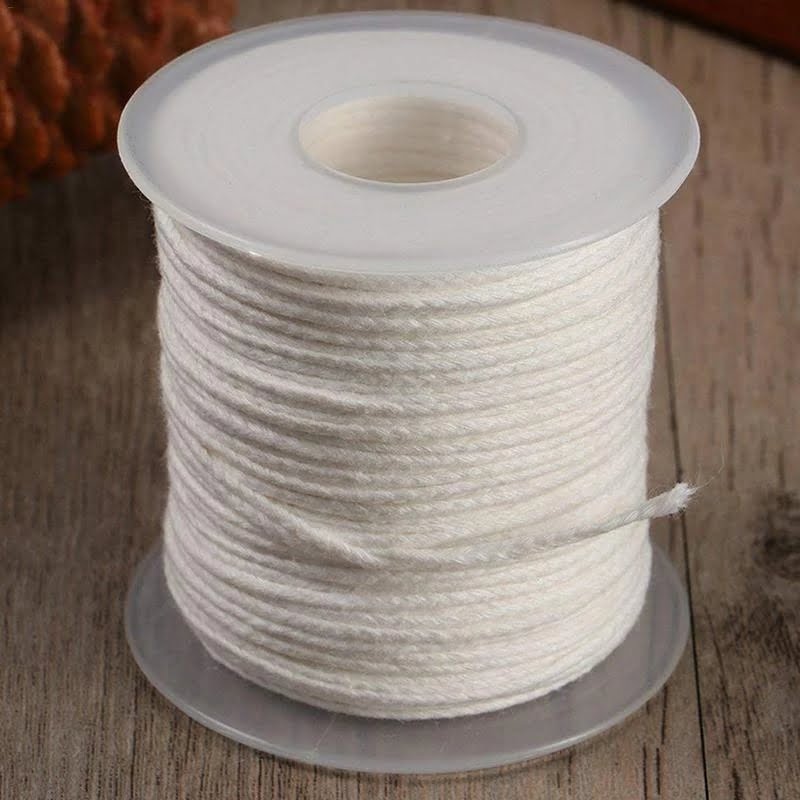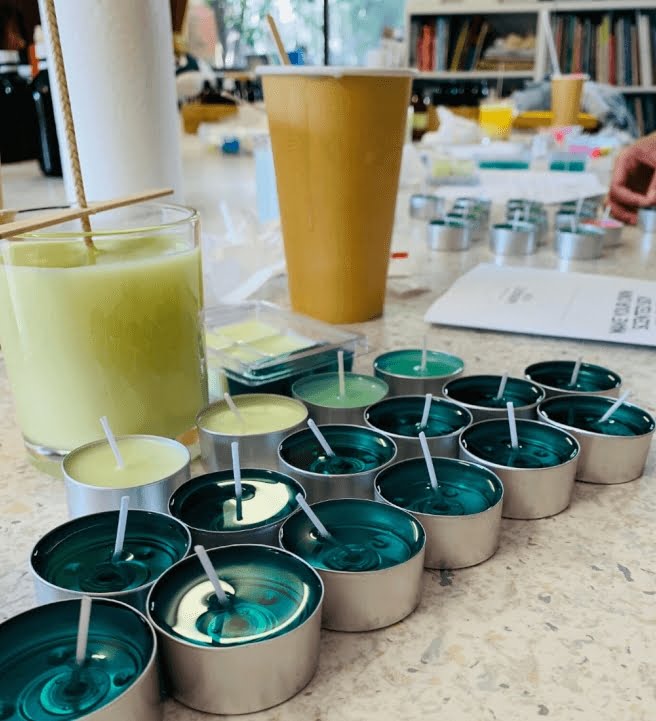Starting a candle making business can be a rewarding venture that combines creativity and profitability. With the growing popularity and demand for handmade candles, there is ample opportunity to tap into this market. In this section, we will explore the reasons why starting a candle making business is a great idea.
Firstly, the demand for handmade candles has been on the rise in recent years. Many consumers are now looking for unique and high-quality products that add a touch of elegance and luxury to their homes. Handmade candles offer just that – they are crafted with care and attention to detail, often using natural ingredients and beautiful fragrances. By starting a candle making business, you can cater to this increasing demand and provide customers with one-of-a-kind products.
Additionally, candle making offers a creative outlet like no other. It allows you to experiment with various scents, colors, and designs to create candles that reflect your personal style and brand. This artistic aspect of candle making can be incredibly fulfilling for those with a passion for crafting and design.
Market research
Market research is a crucial step in starting a candle making business, as it helps identify your target audience and niche. Understanding the preferences and needs of your potential customers will allow you to create candles that resonate with them, increasing your chances of success in the market. Conducting thorough market research can help you determine which candle styles, scents, and price points will appeal to your target market.
To begin your market research, start by defining your target audience. Consider factors such as age range, gender, lifestyle, and interests that align with your candle offerings. This will help you tailor your products to their specific needs and preferences. Additionally, researching the current trends in the candle industry can provide insights into popular styles and scents that are in demand.
There are several methods you can use to gather information about your target audience. One effective approach is conducting surveys or interviews with potential customers to gain valuable feedback on their preferences. Another method is analyzing existing market data and competitor analysis to identify gaps in the market that you can fill with your unique offerings.
Once you have gathered sufficient data about your target audience, use it to define your niche within the candle making industry. This involves identifying a specific segment of the market where you can differentiate yourself from competitors and establish a strong presence. By specializing in a particular style, scent, or theme, you can cater to a specific group of customers who are passionate about those elements.
| Market Research Strategies | Description |
|---|---|
| Surveys and interviews | Gather feedback from potential customers to gain insights into their preferences. |
| Competitor analysis | Analyze existing market data and study competitors to identify gaps in the market. |
| Trend research | Stay updated on current trends in the candle industry to create products that are in demand. |
Creating a business plan for your candle making business
Creating a business plan is an essential step in starting any successful business, and a candle making business is no exception. A well-crafted business plan will not only help guide you through the initial stages of setting up your business but also serve as a roadmap for long-term success.
In this section, we will explore the significance of having a solid business plan and guide you through the essential components to include when creating one for your candle making business.
The importance of a well-crafted business plan
Having a comprehensive business plan is crucial for several reasons. Firstly, it helps you define your goals and objectives for your candle making business. A clear vision will guide your decision-making process and keep you focused on achieving your desired outcomes. Additionally, a well-structured plan serves as a communication tool when seeking financial support or partners to join your venture.
A business plan also forces you to conduct thorough market analysis and competitive research. This will help you understand the current market trends, identify potential customers, and determine how to position your candle products effectively. Moreover, having financial projections in your plan gives you a realistic understanding of the costs involved in starting and running your candle making business, ensuring that you are adequately prepared financially.
Components of a candle making business plan
To create an effective business plan for your candle making venture, there are several key components to include:
- Executive Summary: Provide an overview of your candle making business highlighting its mission statement, target market, unique selling points, and financial goals.
- Market Analysis: Conduct thorough research on the candle industry, including customer demographics, market trends, competition analysis, and growth potential.
- Competitive Analysis: Identify competitors in the market and assess their strengths and weaknesses. Determine what sets your candles apart from others already available.
- Sales and Marketing Strategies: Describe how you will reach and attract customers through various marketing channels such as social media, online platforms, and local markets. Outline your pricing strategy, sales projections, and how you plan to build customer loyalty.
- Operational Plan: Detail the day-to-day operations of your candle making business, including the production process, sourcing materials, inventory management, and quality control.
- Financial Projections: Prepare comprehensive financial statements, including income statements, cash flow projections, and balance sheets. This will help you understand the startup costs, operating expenses, and revenue potential of your business.
By carefully considering these components when creating a business plan for your candle making business, you will have a solid foundation for success and be well-prepared to navigate the challenges that may arise in this industry.
Setting up your candle making workshop
When starting a candle making business, it is essential to have a dedicated workspace where you can create your products. Setting up a well-equipped and organized candle making workshop will ensure efficiency and quality in your production process. Here are some steps to get you started:
1. Equipment and supplies checklist:
- Wax melting pot or double boiler.
- Thermometer.
- Heat-resistant containers or molds.
- Candle wicks.
- Fragrance oils or essential oils.
- Dyes or colorants.
- Stirring utensils (spoons, spatulas).
- Measuring tools (scales, measuring cups).
- Packaging materials (jars, boxes, labels).
Having the right equipment and supplies will make the candle making process smoother and more enjoyable.
2. Workspace considerations:
When selecting a location for your workshop, consider factors such as adequate ventilation, access to water sources for cleaning equipment, and proximity to suppliers and potential customers. Ensure that your workspace has enough space to accommodate all your equipment and materials.
3. Safety precautions:
Safety should be a top priority when setting up your candle making workshop. Make sure to follow safety guidelines and best practices such as wearing protective gear like gloves and goggles when handling hot wax or chemicals. Keep a fire extinguisher nearby in case of emergencies.
It is important to create an organized and safe workspace so that you can work efficiently and produce high-quality candles. Remember to regularly clean and maintain your equipment to prolong its lifespan. By setting up a well-functioning workspace, you will be one step closer to running a successful candle making business.
Sourcing materials and supplies for candle making
When starting a candle making business, sourcing high-quality materials and supplies is crucial to ensure the production of top-notch candles that meet customer expectations. Here are some valuable insights on where and how to source wax, fragrance oils, wicks, containers, and other essential supplies at competitive prices.
- Wax: The type of wax you choose will greatly impact the quality and burn time of your candles. Consider experimenting with different types such as soy wax, beeswax, or paraffin wax to find the one that suits your customers’ preferences. Look for reputable suppliers that offer pure and clean-burning wax.
- Fragrance oils: A wide variety of fragrance oils are available in the market to add pleasant scents to your candles. Research popular scents and trends in the candle industry to determine which ones are likely to appeal to your target market. Connect with fragrance oil distributors or manufacturers who offer a diverse range of high-quality options.
- Wicks: Choosing the right wick size and material is important for proper burning and performance of your candles. Consider factors such as diameter, height, flame stability, burn rate, and compatibility with different types of wax when selecting wicks. Reach out to reputable suppliers who offer a wide selection of wicks specifically designed for candle making.
- Containers: Selecting attractive containers enhances the visual appeal of your candles while providing practicality for customers. Look for suppliers that offer a variety of container options such as jars, tins, or votives in various sizes and styles. Consider pricing, durability, compatibility with different wax types, and aesthetic appeal when making your selection.
- Other essential supplies: In addition to wax, fragrance oils, wicks, and containers, there are other important supplies needed in candle making such as colorants (dyes or pigments), heat-resistant glue dots or adhesive tabs (for securing wicks), labels or tags for branding, and packaging materials. Research reputable suppliers that offer a wide range of high-quality supplies to meet your specific needs.
By sourcing your candle making materials and supplies from reputable and reliable sources, you can ensure consistency in the quality of your products and better customer satisfaction. It is also beneficial to establish good relationships with suppliers for potential bulk discounts or exclusive product offerings. Remember to always prioritize the quality of your materials to create candles that customers will love.
Developing your candle product line and branding
When starting a candle making business, one of the crucial aspects to focus on is developing a unique and appealing candle product line. By offering a variety of candle styles, designs, and scents, you can cater to different customer preferences and establish a strong market presence. Additionally, effective branding plays a vital role in capturing the attention of potential customers and fostering brand loyalty.
To develop your candle product line, it is important to explore different styles and designs that align with your target market’s tastes. Experiment with various types of candles such as pillar candles, container candles, taper candles, or novelty candles. Consider incorporating trends in home decor or seasonal themes to stay relevant and attract customers.
Alongside the style and design of your candles, choosing the right scents is essential. Conduct market research to understand popular fragrance preferences among your target audience. This could involve conducting surveys or sampling fragrances with potential customers. By offering a range of scents that appeal to different preferences, you can cater to a broader customer base.
Branding is an integral part of creating a successful candle making business. Establishing a unique brand identity helps differentiate your products from competitors and allows customers to recognize them easily. Your branding should be incorporated into every aspect of your business including packaging, labels, website design, social media accounts, and marketing materials.
When developing your brand identity as well as packaging for your products, consider factors such as color schemes, font styles, logo design, and brand messaging. Choose colors that evoke emotions associated with relaxation or ambiance for candles while ensuring they align with your target audience’s preferences.
By focusing on developing an enticing candle product line coupled with effective branding strategies like attractive packaging and consistent messaging across platforms, you can create strong differentiation in the market and build lasting relationships with customers.
| Developing Your Candle Product Line | Developing Your Branding |
|---|---|
| Explore various candle styles, designs, and scents | Create a unique brand identity |
| Cater to different customer preferences | Incorporate branding into every aspect of the business |
| Conduct market research on fragrance preferences | Choose colors, font styles, and logo design that align with the target audience |
| Incorporate trends in home decor or seasonal themes into product line | Create consistent packaging and messaging across platforms |
Pricing your candles for profit
Factors to Consider When Pricing Your Candles
When it comes to pricing your candles, it’s important to consider several factors to ensure that you can make a profit while still remaining competitive in the market. It’s not just about covering the cost of materials and labor – you also need to account for overhead expenses and desired profit margins. Here are some key factors to keep in mind when setting prices for your candles:
Cost of Materials
Calculate the cost of all the materials used in making your candles, including wax, fragrance oils, wicks, containers, and packaging. Consider purchasing these supplies in bulk or finding suppliers that offer competitive prices to help lower your overall costs.
Labor
Determine how much time it takes you to make each candle and how much you value your time. If you have employees who assist with production, be sure to include their wages as part of the labor cost. Remember to factor in indirect labor costs such as planning, marketing, and administrative tasks.
Overheads
Include all the indirect costs associated with running your candle making business, such as rent for your workshop space, utility bills, equipment maintenance and depreciation, insurance premiums, and any other general operating expenses.
Desired Profit Margins
Consider how much profit you want to make from each candle sold. This will depend on various factors such as market demand, competition analysis, and long-term business goals. It’s essential to strike a balance between profitability and affordability for your target audience.
Determining Competitive Price Points
Setting competitive price points for different candle products is crucial to attract customers while maintaining profitability. Here are some strategies to help you determine appropriate prices for your candles:
Competitor Analysis
Research what similar businesses in your area or niche are charging for their candles. Take note of the quality, design, size, and scent of their products to assess how your candles compare. Determine whether you want to position your candles as a premium or budget-friendly option within the market.
Value Proposition
Consider what unique value your candles offer that sets them apart from competitors. Whether it’s a specific scent, eco-friendly packaging, or an exclusive design, be sure to reflect this added value in your pricing strategy.
Market Demand
Understand the demand for specific candle styles, scents, and sizes within your target market. If certain designs or scents are highly sought after, you may be able to charge a premium price for those products.
Sales and Marketing Objectives
Consider whether you’re using pricing as a promotional strategy to attract new customers or build brand loyalty. Offering occasional discounts or special promotions can help create excitement around your candles and encourage repeat purchases.
Remember that pricing is not set in stone – you can always adjust your prices based on customer feedback, sales performance, and changes in costs. Regularly evaluate your pricing strategy to ensure that it aligns with both profitability and customer expectations in order to achieve long-term success in the candle making industry.
Marketing and promoting your candle making business
Once you have established your candle making workshop and developed your product line, the next crucial step is marketing and promoting your business. Effective marketing strategies will help you reach your target audience, create brand awareness, and ultimately drive sales. Here are some key tips to successfully market and promote your candle making business.
- Utilize social media platforms: Social media has become an essential tool for businesses to connect with their customers. Create accounts on platforms such as Instagram, Facebook, and Pinterest to showcase your candles through captivating product photography. Engage with your audience by posting regularly, offering behind-the-scenes glimpses of the candle-making process, and sharing informative content about the benefits of handmade candles.
- Participate in local markets and craft fairs: Local markets and craft fairs provide an excellent opportunity to showcase and sell your candles in person. These events attract a diverse range of customers who appreciate handmade products. Consider setting up an eye-catching booth that reflects the aesthetic of your brand, offer samples or discounts on certain products during these events to generate interest.
- Leverage online platforms: In addition to social media, take advantage of online platforms such as Etsy, Amazon Handmade, or your own e-commerce website to expand your customer reach. These platforms provide a convenient way for customers worldwide to discover and purchase your candles. Invest time into creating compelling product descriptions that highlight the unique qualities of each candle.
- Collaborate with influencers and bloggers: Influencers and bloggers can help amplify your brand’s reach by promoting your candles to their followers who trust their recommendations. Research influencers or bloggers whose audience aligns with your target market, reach out to them with a proposal for collaboration – such as sending them free samples in exchange for honest reviews or featuring your products on their platform.
- Offer personalized experiences: Organize workshops or classes where customers can learn how to make their own candles under expert guidance. This not only creates an interactive and memorable experience but also promotes your brand as a trusted authority in candle making. You can also offer customization options for customers to create bespoke candles tailored to their preferences.
Remember, consistency is crucial in marketing your candle making business. Regularly analyze the effectiveness of your marketing efforts, adapt strategies as needed, and stay up to date with current trends. By employing these marketing tactics, you can effectively promote your candle making business and establish a strong presence in the market.
Legal and regulatory considerations for a candle making business
Starting a candle making business requires careful consideration of the legal and regulatory requirements that govern this industry. Understanding and complying with these guidelines is crucial for ensuring the safety of your products and protecting your business from potential legal issues. In this section, we will explore some of the key legal considerations you need to keep in mind when starting a candle making business.
One of the first steps you should take is to research and identify the specific regulations that apply to candle manufacturing in your area. These regulations may vary depending on your country, state, or even local jurisdiction. Some common areas that are typically regulated include labeling requirements, product safety standards, and restrictions on certain ingredients or materials. It is important to familiarize yourself with these rules to ensure that your candles meet all necessary standards.
In addition to product-related regulations, you should also consider any legal requirements for operating a small business in your location. This may involve obtaining permits or licenses specific to running a candle making business, such as a general business license or a specialized permit for handling and storing flammable materials. Researching these requirements early on will help you avoid unnecessary delays or fines down the line.
Another important aspect to consider is insurance coverage. As with any business, it is wise to protect yourself financially by having appropriate insurance policies in place. This may include liability insurance to cover any potential damages caused by your products or property insurance for your workshop space and equipment. Consult with an insurance professional experienced in small businesses to assess the right coverage options for your specific needs.
Lastly, it is critical to prioritize safety throughout your candle making process. This not only ensures compliance with regulations but also protects both you and your customers from accidents or injuries related to candles.
Implementing proper safety protocols includes practices such as maintaining a clean and organized workspace, using suitable personal protective equipment (PPE), following recommended pouring temperatures and cooling times, diligently testing products for performance and safety, providing clear warning labels on finished candles, and including safety instructions with each purchase.
By understanding and complying with legal and regulatory considerations, you can establish a solid foundation for your candle making business. Taking the time to research the specific requirements in your area, securing necessary permits or licenses, obtaining appropriate insurance coverage, and implementing safety protocols will help you navigate the legal landscape while ensuring the longevity and success of your venture.
Conclusion
In conclusion, starting a candle making business offers a unique opportunity to tap into the growing market demand for handmade candles while also providing a creative outlet for entrepreneurs. Throughout this article, we have discussed various key aspects and steps to consider when entering the candle making industry.
First and foremost, understanding your target audience and niche is crucial. By conducting thorough market research, you can identify the specific candle styles, scents, and price points that will appeal to your potential customers. This knowledge will enable you to develop a product line that stands out in the market and resonates with your target market.
A well-crafted business plan is another vital component of long-term success in the candle making industry. It helps define your vision, analyze the competition, outline sales and marketing strategies, and project financials. By outlining a clear roadmap for your business, you can make informed decisions and stay focused on your goals.
Setting up an efficient and well-equipped workshop is essential for producing high-quality candles. Carefully selecting your materials and supplies contributes significantly to the final product’s quality. Moreover, creating a compelling brand identity through packaging and branding plays a crucial role in establishing a strong market presence.
When it comes to pricing your candles, it is important to consider not only the cost of materials but also labor, overheads, and desired profit margins. Finding the right balance between competitiveness and profitability is key to ensure sustainability in the long run.
Lastly, effective marketing tactics such as utilizing social media platforms, participating in local markets or craft fairs, showcasing captivating product photography are all essential for promoting your candle making business effectively.
By heeding these tips and maintaining passion, persistence, and continuous learning throughout your journey in the candle making industry – success becomes an achievable goal. So go ahead and take action – unlock your creativity and start your own profitable candle making business today.
Frequently Asked Questions
Is candle making a profitable business?
Candle making can be a profitable business if managed effectively. The profitability of a candle making business depends on various factors such as the quality of the candles produced, market demand, pricing strategy, distribution channels, and overall business efficiency.
By offering unique or high-quality candles that cater to specific niches or target markets, entrepreneurs can position themselves in a competitive advantage and potentially generate substantial profits. However, like any business venture, success requires thorough planning, market research, strategic marketing efforts, and continuous innovation to stay relevant and meet the evolving demands of customers.
How much does it cost to start a candle business?
The cost to start a candle business can vary depending on several factors such as scale of operations, production methods chosen, sourcing materials, and marketing plans. Generally speaking, starting a small-scale candle making business from home may require an initial investment ranging from a few hundred to a few thousand dollars.
This investment would typically cover costs associated with equipment (e.g., melting pots, molds), raw materials (beeswax or soy wax, wicks), packaging materials (jars or containers), fragrance oils or essential oils for scenting the candles, labeling and branding materials, and potential marketing expenses. As the business expands and scales up production or begins selling through retail stores or online platforms, costs can increase accordingly.
What is the 84 candle rule?
The “84 candle rule” refers to an industry standard measurement used in retail stores for burning display candles. It is based on safety guidelines that limit candles displayed in-store from being burned for more than four hours at a time during store hours to prevent excessive heat build-up and reduce fire hazards. After 4 hours of burn time on one day (day 1), the candle should remain unlit for at least 20 consecutive hours before it is burned again for another 4 hours (on day 2).
Following this pattern ensures that retailers comply with safety regulations while also allowing customers to evaluate the appearance and scent of the candles without compromising safety. This rule helps retailers manage candle burning displays while prioritizing customer experience and safety.

Welcome to my candle making blog! In this blog, I will be sharing my tips and tricks for making candles. I will also be sharing some of my favorite recipes.





